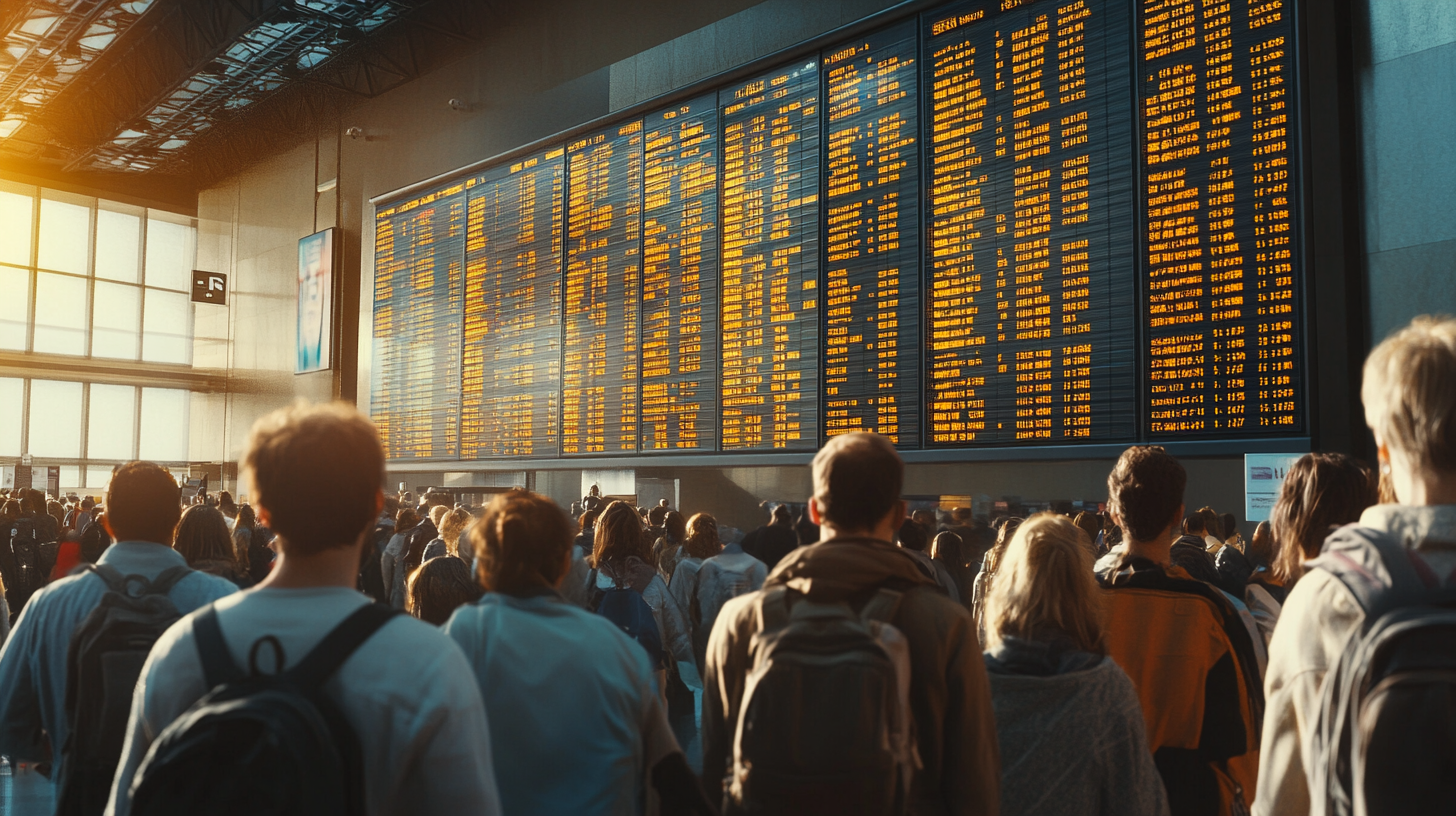How to Time Your Ticket: Insider Strategies for Frequent Flyers
The Myth of the Perfect Booking Day

In my own adventures, I’ve often heard the rumor that there’s a single magical weekday for scoring the cheapest airfare—some claim Tuesday, others Sunday. But if there’s one thing I’ve learned from analyzing countless flight searches and reading up on the latest industry data, it’s that there’s no such thing as a guaranteed golden day. According to Expedia‘s 2024 findings, Sunday purchases can sometimes yield up to 13% savings on international tickets, while Google’s systems might show a slight edge for booking midweek. But in the year 2025, with so many variables in play, focusing on a single day can feel like hunting for a unicorn.
Instead, I believe the key is monitoring real-time shifts. Airline pricing algorithms factor in demand, fuel costs, even the shifting moods of the market. I’ve tracked daily fluctuations that hinge on everything from major sporting events to unexpected holiday surges. The data consistently shows there’s no permanent sweet spot. I once found a great last-minute deal on a Monday afternoon purely because the airline was trying to fill seats before a midweek lull. The takeaway? Keep your eyes on the fare changes rather than pinning your hopes on a single day.
I’ve also seen how viral tips about booking at an exact hour—like, say, 1 a.m. on a Wednesday—can be more distracting than helpful. Although there’s anecdotal evidence of small dips, broader industry research confirms that big savings usually come from locking in rates early and setting up fare alerts. If you’re lucky, you might stumble upon a flash sale or a surprise drop, but it doesn’t pay to wait for mythical penny-pinching moments. When you spot a price that aligns with your travel goals, grab it. And don’t worry about rebooking—a number of airlines now let you pounce on a lower fare if it appears later.
Best Windows for Domestic vs. International

In my own travels across the U.S., I’ve noticed a fascinating pattern: sometimes you can score a sweet bargain 30 days out, while other times you might need to jump on a deal three months in advance. A recent CheapAir workaround suggests that the optimal window for domestic flights tends to hover around 28 to 42 days prior to departure. These findings align with my personal experience: I once snagged a cross-country flight at a surprisingly affordable rate just five weeks ahead of a holiday weekend. The kicker, as industry data shows, is that flights can undergo up to 49 price changes from when they first go on sale.
For international travel, it’s an entirely different ballgame. According to various studies and my own trial-and-error bookings, you often need more lead time. I’ve found that starting your search two to eight months before your intended departure can yield the best results, especially if you’re eyeing popular routes or peak travel seasons. In one instance, I started tracking flights to Tokyo nearly six months in advance, and the fares fluctuated wildly—rising, falling, then rising again almost $300 over a few short weeks. By consistently monitoring and using alerts, I was able to catch a modest dip and finalize my trip at a great price.
Expedia’s data from late 2024 also points out that certain weekends—particularly Sundays—can lead to around 13% savings on international journeys. For bigger adventures, I recommend casting a wide net and staying patient. If you can, start watching prices at least three to six months ahead of departure, especially for hotspots like Europe during summer or Southeast Asia during the winter holidays. The earlier you begin, the higher your chances of pouncing on a sudden deal that aligns perfectly with your travel timeline.
Midweek Magic and Seasonal Tricks

Over the past few years, I’ve come to love flying on Wednesday mornings. There’s a certain calm in the air, not to mention that midweek flights are often more budget-friendly. KAYAK‘s research supports my anecdotal observations: Wednesdays do tend to serve up cheaper one-way tickets, particularly for domestic trips. I’ve personally snagged some unbelievable bargains on a Tuesday night flight—when most people are either at work or waiting for the weekend rush—and found fewer crowds and smoother check-ins.
For international fares, I still see slightly better options popping up midweek, although these deals can vary by route. Sometimes, carriers push promotions on Tuesdays or Wednesdays to fill up seats for specific flights, especially after a busy weekend sales cycle. It’s almost like a mini price reset occurs midweek. Whenever I’m planning a longer journey, I try to keep an eye on these windows. And yes, I’ve purposely shifted my itinerary by a day or two—say, leaving on a Wednesday instead of a Thursday—to tap into those cost-friendly vibes. It’s a small adjustment that can save you a decent chunk of change.
Seasonal tricks also play a big role. In January—often considered a low travel month—I’ve witnessed flight prices plunge significantly. A 2025 analysis from an industry aggregator revealed that January fares to certain European cities could be 20% cheaper than in peak summer. However, holiday travel is another story: demand skyrockets, and prices follow suit. If you’re aiming for a prime holiday slot, I recommend booking at least three or four months out, even if you’re flexible on dates. For me, paying a bit extra to secure a seat during high-demand times has sometimes been worth the peace of mind, but I always weigh that against potential last-minute drops. It’s a balancing act of comfort versus cost.
Make Tools and Flexibility Your Allies

Nothing has made my travel planning smoother than using automated tools. I routinely set up fare alerts on Google Flights, KAYAK, and Hopper. These services ping me whenever ticket prices for my chosen route drop, saving me from the endless refresh loop. Once, I’d shelved my dream of an impromptu trip to Reykjavik because the flight costs seemed sky-high. But a fare alert revealed a sudden dip, and I ended up booking a round trip for almost 30% off the original price. Keeping real-time tabs on shifting fares can truly spell the difference between a well-budgeted vacation and an expensive headache.
Flexibility is another powerful ally. I know it’s not always possible to shift business schedules or personal commitments, but being open to leaving a day early or returning a day late can make a huge difference. I’ve discovered that traveling midweek, taking a red-eye, or even embracing a longer layover can slash hundreds off the ticket price. This rings especially true when redeeming miles. As soon as you see a redemption sweet spot—like a rare business-class saver seat—pounce. Frequent flyer award availability can evaporate in a matter of hours, especially for high-traffic routes like New York to London.
In collaboration with these tools and a flexible mindset, I’ve managed to weave together unique trips that otherwise would have cost a small fortune. It’s not about chasing every deal—let’s face it, we have busy lives—but rather setting up a system to notify you when fares align with your budget. If you spot an advantageous rate, don’t hesitate. There’s a good chance it won’t last long, especially in a competitive airfare climate where dynamic pricing can pivot in minutes.
The Bottom Line

From all my digging into flight prices and from hearing endless tidbits from fellow travelers, I’ve concluded there’s no universal rule—only guidelines. You won’t find a single best day like “always book on Sunday at 3 p.m.” that applies to every route, every season. The sweet spot for domestic flights often falls roughly one to three months before takeoff, while international fares may require earlier scouting—anywhere from two to eight months in advance. But these windows can shift based on holidays, destination popularity, or sudden airline promotions.
Overall, combining fare alerts, flexible travel dates, and responsiveness to price drops is the trio that consistently delivers results for me. If there’s one piece of advice I’d highlight, it’s that the best time to buy is when you see a reasonable rate that echoes your budget and schedule. Airlines can change prices at a moment’s notice, and I’d hate for anyone to pass up a golden deal while waiting for an elusive “perfect timing.” The day you book might not be special, but if it nets you a great price and sets the tone for a wonderful journey, I’d call that a success.
Final Thoughts
Affordability and convenience rarely appear simultaneously by accident. I’ve found through countless trips that a proactive approach—keeping tabs on flight prices, staying open-minded about departure dates, and jumping on unexpected deals—pays off in spades. The best flight plan emerges from a blend of current data, personal flexibility, and a good dose of traveler intuition. At the end of the day, if you meticulously track fares and remain open to shifting your schedule, you’ll be well-positioned to snag the price that’s right for you.
While there’s no singular roadmap to guarantee the cheapest flight every time, it’s easier than ever to stay informed. With the abundance of online fare trackers, AI chatbots, and timely insights from travel sites, the playing field has leveled. Whether you’re booking domestic or international flights, remember that each traveler’s journey is personal. The key is tailoring your strategies to match your specific goals and constraints.
Barry B.’s Take
Travel has become more than a pastime for me—it’s almost a living, breathing experiment where I watch how flight prices dance across my screen day in and day out. I’ve always been fascinated by how an airline’s algorithmic shifts can align perfectly with a spontaneous break in my schedule. For me, the thrill is in uncovering that intersection of data-driven research and real-world application.
No matter how many advanced tips or analytics you follow, each trip holds a dash of unpredictability. My approach? Have fun with it. Stay curious, keep exploring, and remain ready to adapt. Because if there’s one act that can capture the magic of modern travel, it’s balancing that sense of wonder with a practical plan.
For more travel insights and a lighthearted take on the latest airline updates, visit milesBUZZ.







